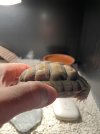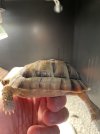4x2x18”. One of the biggest benefits I’ve found with focusing on small species is the ability to have enclosures that are not very high. Allows you to stack more, and more importantly, allows you to use smaller wattage bulbs, lowering costs and keeping the tortoise room at a more manageable temperature.
Attachments
-
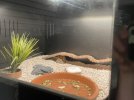 7A4299F7-4AF7-4502-A826-FB83C90B14E3.jpeg1.5 MB · Views: 13
7A4299F7-4AF7-4502-A826-FB83C90B14E3.jpeg1.5 MB · Views: 13 -
 5BA42731-C082-4F89-A28E-98DA27DA1722.jpeg1.8 MB · Views: 12
5BA42731-C082-4F89-A28E-98DA27DA1722.jpeg1.8 MB · Views: 12 -
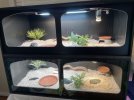 F927BEAB-3468-42E3-AA7C-213C07E023AB.jpeg1.7 MB · Views: 13
F927BEAB-3468-42E3-AA7C-213C07E023AB.jpeg1.7 MB · Views: 13 -
 88994A7E-072F-443B-857E-062FA8A99A53.jpeg1.9 MB · Views: 13
88994A7E-072F-443B-857E-062FA8A99A53.jpeg1.9 MB · Views: 13 -
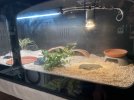 9963EAFC-9F8D-4C77-A0B1-90A0A7286E9A.jpeg1.5 MB · Views: 14
9963EAFC-9F8D-4C77-A0B1-90A0A7286E9A.jpeg1.5 MB · Views: 14 -
 D67CA846-A526-4CE7-BDE8-61613A561D29.jpeg1.3 MB · Views: 12
D67CA846-A526-4CE7-BDE8-61613A561D29.jpeg1.3 MB · Views: 12 -
 53A9868C-C1D3-4FE2-B8E4-6DDA99AFF218.jpeg1.3 MB · Views: 11
53A9868C-C1D3-4FE2-B8E4-6DDA99AFF218.jpeg1.3 MB · Views: 11 -
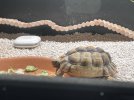 A23A9F64-7070-4C6A-923E-FE05C0280488.jpeg1.1 MB · Views: 11
A23A9F64-7070-4C6A-923E-FE05C0280488.jpeg1.1 MB · Views: 11 -
 A7CC4EA6-DE9E-4DC2-BF93-8D89E8A203A6.jpeg1.5 MB · Views: 13
A7CC4EA6-DE9E-4DC2-BF93-8D89E8A203A6.jpeg1.5 MB · Views: 13 -
 1FB79A76-2974-4B04-8BE2-55971F996D24.jpeg1.4 MB · Views: 11
1FB79A76-2974-4B04-8BE2-55971F996D24.jpeg1.4 MB · Views: 11 -
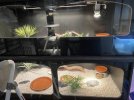 D7178DB3-8627-4498-9FE8-9D970EFF90C2.jpeg1.8 MB · Views: 13
D7178DB3-8627-4498-9FE8-9D970EFF90C2.jpeg1.8 MB · Views: 13
